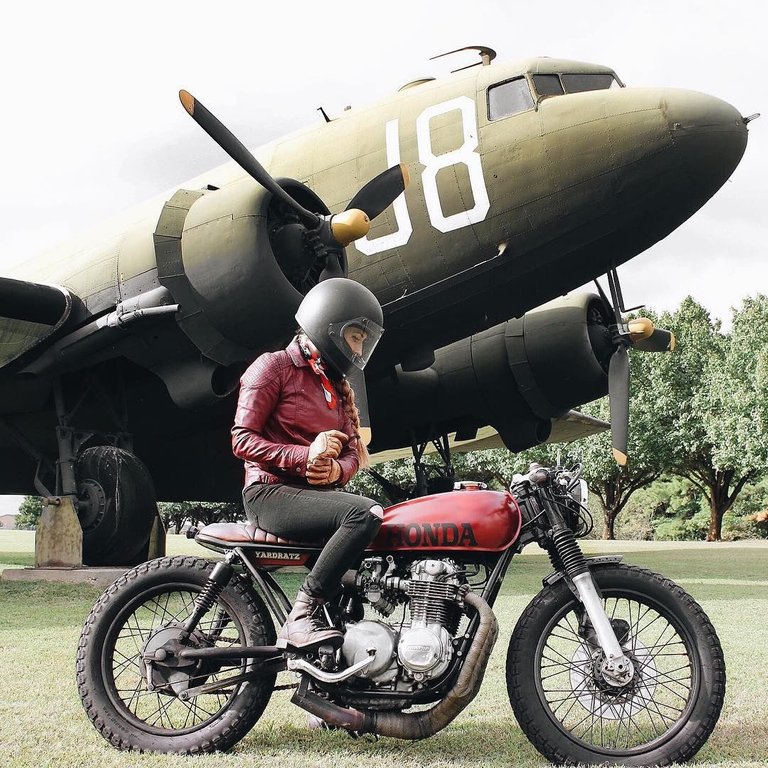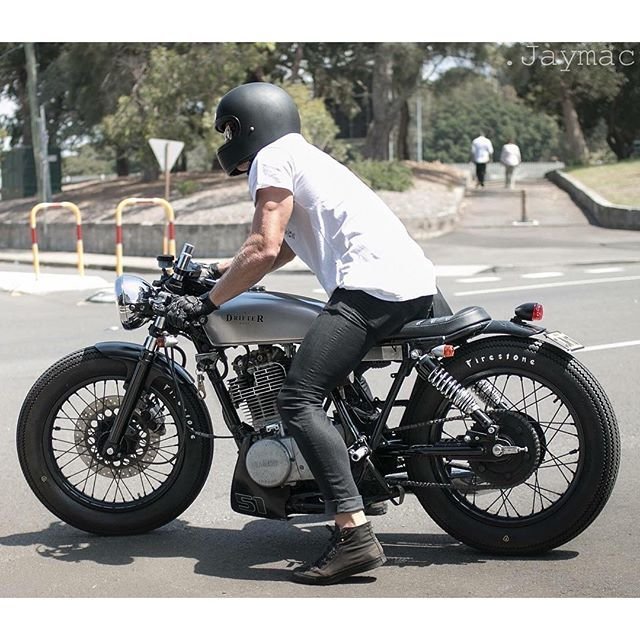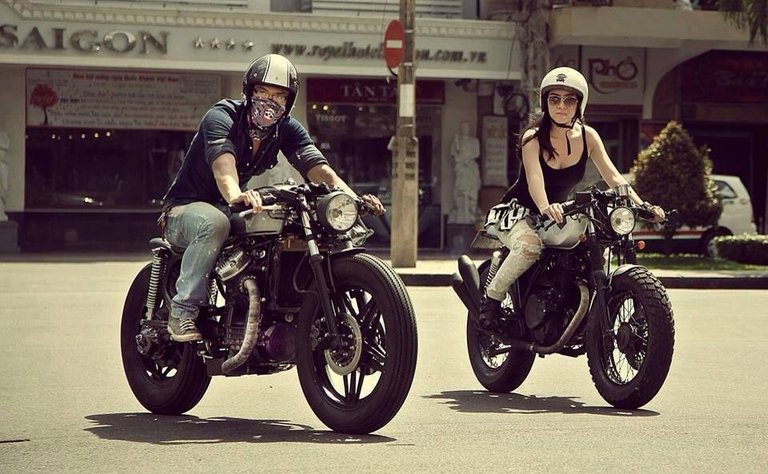
The history of the café racer stretches back to the early 1950s, to a time where motorbikes were used as a daily mode of transport and were rarely used as machines to have a bit of fun on.
But things soon started to change. The 1950s marked the dawn of Rock 'n' Roll and, with it, a brand new youth counterculture emerged: the Rockers. The Rockers' chosen mode of transport was the motorbike, but they craved something fast, personalised and distinctive. And so the café racer was born.
One of the most unique breeds of motorcycle, the café racer is a light-weight, light-powered motorcycle. Modified from manufactured models, the café racers were designed with handling and speed in mind, with little consideration for comfort.
The café racers were built to achieve two things: to get the rider from place-to-place as quickly as possible; and to ensure they looked cool doing it.
Of course, café racers weren't readily available and so had to be built. During the café racer boom there were some fast bikes on the market from the likes of Norton, Triumph and BSA, but there was no particular model that brought all the required design elements together. The quick bikes were capable of producing up to 45bhp, but they didn't have the look the Rockers were after.
The typical café racer is a hybrid bike. By the mid-fifties, bikers started fitting Triumph engines into Norton Featherbed frames: the Triumph engines offered more power, while the Norton frames offered better handling. This popular combination needed a name, and so riders called the bike the Triton.
The Triton provided riders with excellent handling and enough power to top 100mph, which was referred to as 'The Ton.' Back then, if you could 'do The Ton,' you became a member of the Ton Up Club. Other, less-expensive café racers included the Tribsa (a Triumph engine fitted within a BSA frame) and the Norvin (a Norton frame fitted with Vincent engines).
Though many riders opted for Norvins, Tribsas and Tritons, no two café racers were ever the same. Personalisation played a huge part in the design of the bikes, whether that was achieved through the clip-on accessories, headlights, exhaust pipes or detailing. Indeed, these were the first customised motorbikes.
The style of the typical racer resembled that of the contemporary Grand Prix roadracer, with its elongated fuel tank, which had dents in it to allow the rider's knees to grip it. The bikes featured low-slung handlebars so the rider could tuck-in to allow better bike control, as well as a one-person, humped seat. The bikes were stripped-down, with engines tuned to achieve maximum speed.
The British bikes were popular at the start but by the mid-1970s the Japanese market had taken over. Soon, the popular racer conversions were Japanese, including three-cylinder Kawasaki two-strokes, four-cylinder Kawasaki Z1 four-strokes, and four-cylinder Hondas. By the end of the 1980s, manufacturers started producing factory café racers, the most popular being the Harley-Davidson XLCR.
At the centre of the café racer boom was London's very own Ace Café, which is still going strong today. According to folklore, the early café racer riders would select a song from the jukebox, ride their bikes around the block and return by the time the song finished. By doing this they could prove to other riders that their bikes were capable of doing The Ton.



Great read! Loved it and the pics even more!
Great post, thank you!
Dig the Skinny Jeans!
Great pictures in the post lad 👍